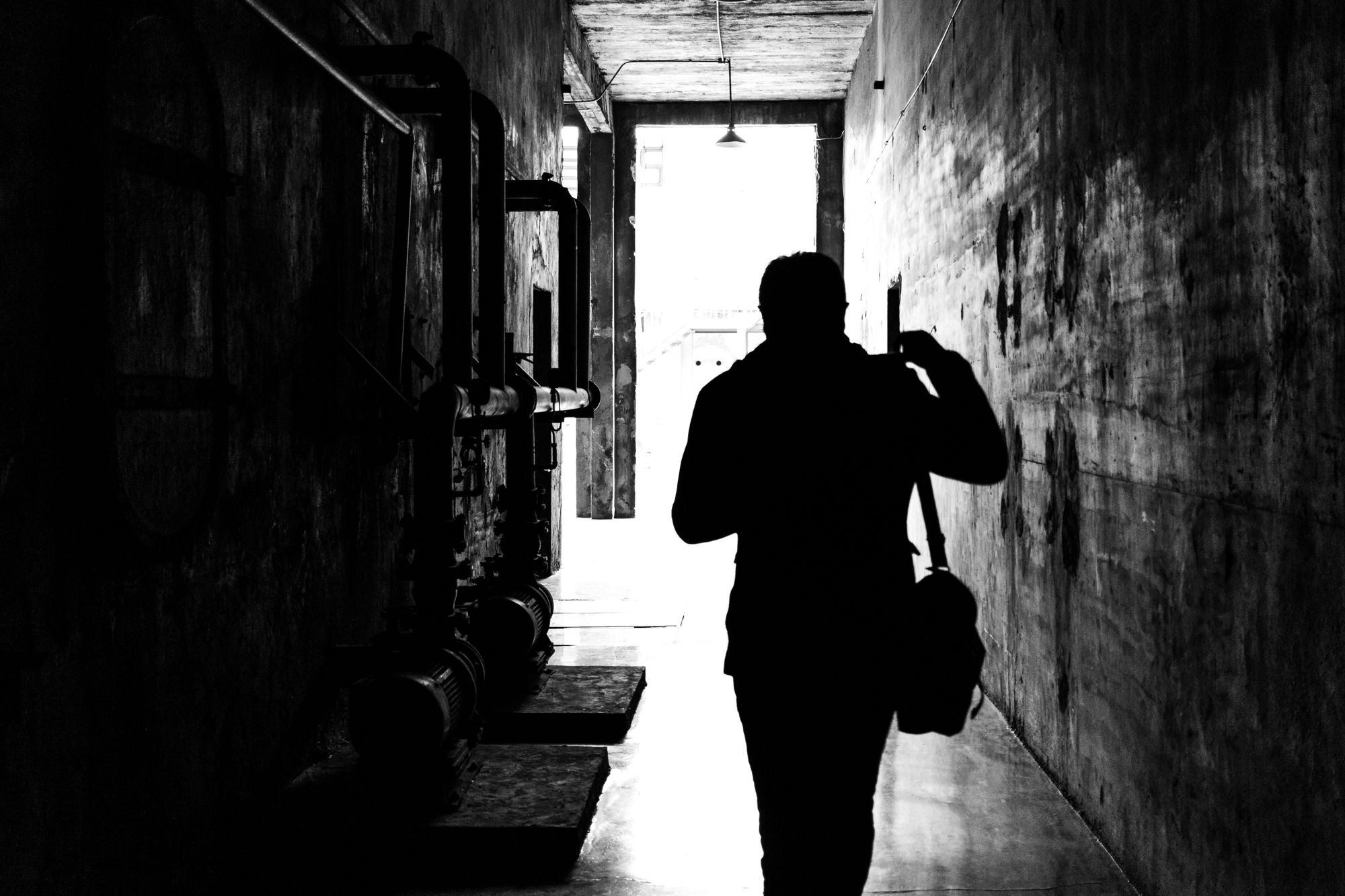Practical advice for your safety in the field
So, you’ve arranged some interviews; you’ve had some professional email exchanges and perhaps a pleasant introductory call. Now you’re in the meeting place, the door has closed. You’ve planned for this and you have strategies to keep you safe, haven’t you?

Image attribution Gauthier Delecroix - 郭天 From the dark to the light
2.0 Generic (CC BY 2.0)
Qualitative research often attempts to answer questions at the margins of our societies, so some of us will deliberately enter the world of ‘Jack Rollers’* and ‘delinquent boys’ (Plummer, 2001). The physical dangers and threats to a researchers’ personal safety when researching muggers, offenders and zones of conflict are high in researchers’ and the institution’s minds when approving this kind of research. But most of us will be involved in more benign settings, even if they are not our own personal settings. It is this more benign aspect of personal safety that we will focus on here.
Who knows you are there?
So, you’ve arranged some interviews; you’ve had some professional email exchanges and perhaps a pleasant introductory call over the phone. Now you’re in the meeting place, the door has closed; it’s just you and them. It helps to bear in mind that they are nervous too; you are a stranger. But you’ve planned for this and you have strategies to keep you safe, haven’t you?
Some institutions have formal procedures for checking in; a little like texting your friend when you get home safely after a night out. Personally, I dislike being ‘tracked’ intensely as it is intrusive, but accept that employers have a legal responsibility to their employees, so I will agree to a check-in arrangement when conducting field-work; after-all, it’s only sensible. If you decide to have an informal buddy system it will only be as effective as the people involved.
How are you going to raise an alarm?
There are different levels of ‘alarm’. The kind where you have failed to check back in and your ‘buddy’ has been unable to contact you and they must raise the alarm with the authorities i.e. the Police. Then there’s the kind where you are raising an alarm for assistance. It could be a single word that you could put in a text or say in a phone call. You could have pre-arranged code words to indicate the level of the threat. Colour codes are obvious (Green, Amber, Red), but perhaps a bit too obvious. Keep it simple whatever you choose.
Examples of increasing alarm actions for you and your buddy:
· 1. Phone me now. I need assistance (e.g an excuse to leave). If your buddy calls and you fail to answer then they must consider if the alarm is immediately raised to the next level, or if they will call again after an agreed time period.
· 2. Come and get me now! OR Inform the police, I’m concerned for my/someone’s safety. You expect your buddy to take the agreed action.
· 3. Ring 999/112. There is a real and present threat to my/someone’s safety. In the UK* you might choose to ring 999 yourself and dial 55 if you are too scared to talk or make a noise, and think about contacting your buddy after you have taken your own action.
Who or what else is there?
This can sound a bit frightening, but this question affects your research methodology as well as your safety. If you are expecting to interview one person and then their partner pops up too, what are you going to do about it? It could be great news for your research; two-for-the-price-of-one, or it could be seriously disruptive to your research purpose and at its worse harmful to you or your participant. Again, set your boundaries in advance and don’t assume. Your mind might be leaping to the idea of abusive family members, but it could be the family pet that poses the biggest threat to you. Are you frightened of dogs, allergic to cats, terrified of tarantulas? Have a conversation with your participants in advance where you check your assumptions and set your expectation.
“Do you have any pets? Would you mind if they are kept away in a separate room while we talk?”
“I expect only to talk to you. Is there anyone/thing that might interrupt us? Do you mind if we pick a time when we can talk without interruption?”
This last question might sound a bit like you’re trying to get them alone; you are, but for reasons of professionalism rather than romantic intimacy, so choose your words and tone carefully. Be explicit about the boundaries.
What’s your ‘exit’ plan?
Exit plans are set in motion before the need for an alarm. Know your institutions’ lone working policies or set up a buddy-system of your own.
When you arrive at the interview location explain that your institution requires you to ‘check in and out’ and make a call, regardless of whether your institution actually requires it or not because:
· It sets a professional tone (I’m doing this because it’s normal and not because I’m scared)
· it marks boundaries (this is an interview not a date)
· it sends the message that you are part of well-oiled professional personal-safety system (an alarm will be raised if I fail to ‘check out’).
If you feel unsafe then you should let someone know, using your alarm system and then leave. This means that if you are prevented from leaving then help is already on its way. You can cancel the alarm once you are safe. Signalling that you are leaving could de-escalate a situation (such as verbal abuse), but it could escalate it, and if this happens quickly, you may not have time to use your phone.
Researching in public spaces
It is inevitable that when we enter an unfamiliar territory that we stand out. When we enter the role of researcher in the field, we stand out. In large impersonal spaces with lots of people we have nothing more than usual to think about. But when we go to more localised venues with fewer people or at unusual times, we need to think a little more.
Understanding the blurry line between a public and a private place.
Humans are both social and territorial animals. Even if you are from a rural background you will know for example the kinds of places that the local teenagers like to hang-out, you may even be able to distinguish between groups who will tolerate strangers and those that will perceive the public space as their private territory. As a stranger you will not know these things for sure. However, you can be alert to the types of spaces that others may consider ‘theirs’ and what the risk might be.
In these kinds of public/private (interstitial or marginal) spaces, locals will approach you and speak to you in a way that they would not in the centre of Trafalgar Square i.e. they expect and feel entitled to an explanation from you the ‘outsider’. They are usually motivated by curiosity and a desire to help. Remember this and respond with respect as well as caution. If you are approached, consider it an opportunity to engage with ‘insiders’ and gain an insight that you might not otherwise have had. Do take the time to be professional; explain what you are doing and give an indication of how long you expect to be there.
I’ve worked with young people in open spaces and whilst it was a pain to answer all their questions (yes, can look at the view in the camera, no, you can’t hold it), they did have some good tips and research insights.
Always be prepared to walk away, even if you perceive that you are in a public space. “It’s a free-country!” -logic will only escalate things. You may have limited opportunities for gathering data and it can be difficult to walk away, but this possibility and contingency should always be part of your research design and costings: Risk Assessments include risks to the completion of research, not just risks to your safety.
Here are additional precautions that you may want to take:
· Make your check-in and -out a voice call not a text. Never ask someone else to check in or out for you; it undermines the system.
· Block your number if you call participants or better still, have a separate sim/mobile number so that you don’t give personal information to interviewees.
· Use an app on your phone that shows a trusted person where your phone is.
· Conduct interviews in a public place (not home) if you are worried about the participant’s behaviour.
· Agree to have another person with you, or have a buddy nearby who will call on you after an agreed time, or if you raise an alarm.
· If you are carrying equipment, keep it covered or disguised. An old sports bag or supermarket bag for life with a towel does the same job as a flashy camera bag and doesn’t mark you as a target for thieves.
· Visit the place first if you can so you know the layout and time-tables; you don’t want to miss the last bus home.
· In public places is natural that people will be curious about what you are doing, don’t be defensive.
· If researching in a public place that is frequented by private groups, gradually introduce yourself to the area, spending increasing amounts of time.
After all of this talk of risk it is important to remember that the threats to your safety are generally low. The biggest threat to your safety when out in field is probably a trip or fall, or some kind of incident with a motor vehicle because you are not paying attention (you’re looking at your phone for directions). Probably the greatest threat in peoples’ homes is the surprise of how other people live their lives. Yes, it can be shocking and bit un-nerving at times, but researching in people’s homes is a privilege and a delight, whether it’s the dog lapping the tea from your cup, the 3 year old prancing about with their pants on their head or the partner shouting from the next room, “Don’t forget to tell them about that time when you…..”. Stay safe and prepare for potential difficulties but enjoy it.
Look out for more on research etiquette in people’s homes in a separate post, and another on the need to balance safety against the reproduction of vulnerability here.
References and resources
* A Jack Roller is a mid C20 term for a mugger. See Plummer, K. (2001) for the background to modern Qualitative Research Methods. ‘Chicago’ and the Making of a Sociological Method. In Plummer, K. (2001). Documents of Life 2. An Invitation to A Critical Humanism (pp 103-117). Sage. https://dx.doi.org/10.4135/9781849208888.
*Some global emergency numbers:
The silent solution to emergency calls: https://www.policeconduct.gov.uk/news/national-campaign-raise-awareness-silent-solution-system
Social workers and health visitors visit all manner of homes and there’s a dark humour and sage advice to be found amongst those who have to care for those at the edges of our social norms. So if you know any, be sure to talk to them. See Rachael Hearson’s humorous and occasionally alarming account of being a Health Visitor for some insight. Rachael Hearson 2020 Handle With Care: Confessions of an NHS Health Visitor.
Handling interviews in other people’s homes Quirkos blog

Topics coming soon
Emotional and psychological vulnerability in research

